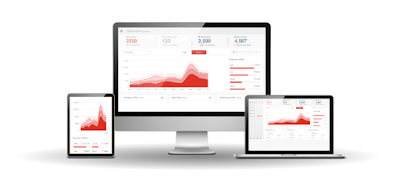Retail businesses can benefit from adopting four important practices to realise their strategic objectives. We outline these essential practices.
Throughout the world, businesses operating in the retail space experience growth and progress only with strategic planning, communication with customers and suppliers, and the use of the most modern processes to do business. And yet, an astonishingly high number of businesses do not incorporate some essential practices that guarantee success, such as:
Throughout the world, businesses operating in the retail space experience growth and progress only with strategic planning, communication with customers and suppliers, and the use of the most modern processes to do business. And yet, an astonishingly high number of businesses do not incorporate some essential practices that guarantee success, such as:
- Working with computers and the digital medium. Maintaining pen-and-paper records of one’s business is passé, and so is working using unskilled labour and obsolete methods. In the current century, every process is driven by, and has a strong connect to, the digital medium. Computers and the Internet are vitally important to the success of the retail industry today. Processes like cloud computing, keeping records of inventory and setting up automatic payment channels with one’s bank to form a seamless interface with customers are just some of the practices that retail industries must incorporate today. All of these require an Internet presence and information fed via computers.
- Incorporating effective POS software in daily operations. Retail businesses do well when they are assisted with effective POS software systems. A POS (Point of Sale) software comprises a master terminal linked to two or more checkout computer terminals either locally or remotely located. The POS software keeps record of each sale, updates inventory, generates continuous reports about sales so that inventory can be refreshed and the business gets an accurate summary of customer satisfaction, and helps the business manage its merchandising and purchasing processes more effectively. A Point Of Sale software thus minimises waste, cuts over- or under-purchasing and familiarises all employees with sales history.
- Managing costs across the board. Providing a viable cost structure for each of its products is a challenge for most retail businesses, especially when there are several ‘me-too’ businesses offering comparable products at lower prices. Further to the above point, retail businesses can keep track of the efficacy of their costing by working with a good POS software. However, the basic principles remain the same when it comes to cost competitiveness: High quality with a competent price for a specific market, offering percentage of cost and sufficient margin for profit while providing periodic discounts and also the opportunity to set multiple price points for the same item at different times of the financial cycle.
- Leveraging social media for sales and leads. Retail businesses can thrive with maximum interactivity with customers, and the best way to get customers heard and feel participative with the business is to engage with them meaningfully. Most businesses in the retail space falter by using social media as a one-way communicating device to announce new launches and products. However, social media engagement is about conversations with customers, and the interaction may also be about subjects unrelated to the business: For instance, a coffee shop may send tweets and Facebook messages urging customers to seek shelter on their premises during a thunderstorm or floods. Customer interaction on social media also entails responding positively and quickly to criticism, and taking useful suggestions on board while crediting the customer for making the suggestion.
